
The Lophophorata or Tentaculata are a Lophotrochozoan clade consisting of the Brachiozoa and the Bryozoa. They have a lophophore. Molecular phylogenetic analyses suggest that lophophorates are protostomes, but on morphological grounds they have been assessed as deuterostomes. Fossil finds of the "tommotiid" Wufengella suggest that they evolved from worm-like animals that resembled annelids.

Euarchontoglires is a clade and a superorder of mammals, the living members of which belong to one of the five following groups: rodents, lagomorphs, treeshrews, primates, and colugos.
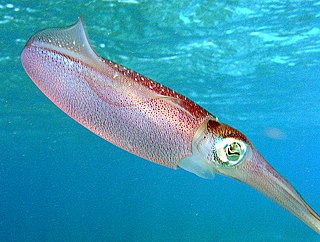
Lophotrochozoa is a clade of protostome animals within the Spiralia. The taxon was established as a monophyletic group based on molecular evidence. The clade includes animals like annelids, molluscs, bryozoans, brachiopods, and platyhelminthes.

The Rickettsiales, informally called rickettsias, are an order of small Alphaproteobacteria. They are obligate intracellular parasites, and some are notable pathogens, including Rickettsia, which causes a variety of diseases in humans, and Ehrlichia, which causes diseases in livestock. Another genus of well-known Rickettsiales is the Wolbachia, which infect about two-thirds of all arthropods and nearly all filarial nematodes. Genetic studies support the endosymbiotic theory according to which mitochondria and related organelles developed from members of this group.
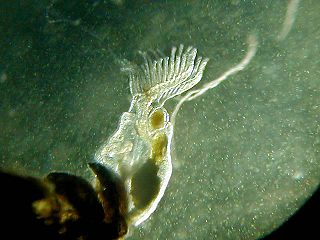
The lophophore is a characteristic feeding organ possessed by four major groups of animals: the Brachiopoda, Bryozoa, Hyolitha, and Phoronida, which collectively constitute the protostome group Lophophorata. All lophophores are found in aquatic organisms.

Neodiapsida is a clade, or major branch, of the reptilian family tree, typically defined as including all diapsids apart from some early primitive types known as the araeoscelidians. Modern reptiles and birds belong to the neodiapsid subclade Sauria.

Boreoeutheria is a magnorder of placental mammals that groups together superorders Euarchontoglires and Laurasiatheria. With a few exceptions male animals in the clade have a scrotum, an ancestral feature of the clade. The sub-clade Scrotifera was named after this feature.

Pancrustacea is the clade that comprises all crustaceans, including hexapods. This grouping is contrary to the Atelocerata hypothesis, in which Hexapoda and Myriapoda are sister taxa, and Crustacea are only more distantly related. As of 2010, the Pancrustacea taxon was considered well accepted, with most studies recovering Hexapoda within Crustacea. The clade has also been called Tetraconata, referring to having four cone cells in the ommatidia. This name is preferred by some scientists as a means of avoiding confusion with the use of "pan-" to indicate a clade that includes a crown group and all of its stem group representatives.

Nidamental glands are internal organs found in some elasmobranchs and certain molluscs, including cephalopods and gastropods.
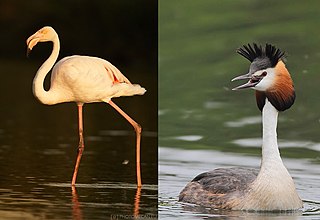
Mirandornithes is a clade that consists of flamingos and grebes. Many scholars use the term Phoenicopterimorphae for the superorder containing flamingoes and grebes.

Phoronids are a small phylum of marine animals that filter-feed with a lophophore, and build upright tubes of chitin to support and protect their soft bodies. They live in most of the oceans and seas, including the Arctic Ocean but excluding the Antarctic Ocean, and between the intertidal zone and about 400 meters down. Most adult phoronids are 2 cm long and about 1.5 mm wide, although the largest are 50 cm long.

Brachiopods, phylum Brachiopoda, are a phylum of trochozoan animals that have hard "valves" (shells) on the upper and lower surfaces, unlike the left and right arrangement in bivalve molluscs. Brachiopod valves are hinged at the rear end, while the front can be opened for feeding or closed for protection. Two major categories are traditionally recognized, articulate and inarticulate brachiopods. The word "articulate" is used to describe the tooth-and-groove structures of the valve-hinge which is present in the articulate group, and absent from the inarticulate group. This is the leading diagnostic skeletal feature, by which the two main groups can be readily distinguished as fossils. Articulate brachiopods have toothed hinges and simple, vertically oriented opening and closing muscles. Conversely, inarticulate brachiopods have weak, untoothed hinges and a more complex system of vertical and oblique (diagonal) muscles used to keep the two valves aligned. In many brachiopods, a stalk-like pedicle projects from an opening near the hinge of one of the valves, known as the pedicle or ventral valve. The pedicle, when present, keeps the animal anchored to the seabed but clear of sediment which would obstruct the opening.

Aequornithes, or core water birds, are defined as "the least inclusive clade containing Gaviidae and Phalacrocoracidae".

The origin of the brachiopods is uncertain; they either arose from reduction of a multi-plated tubular organism, or from the folding of a slug-like organism with a protective shell on either end. Since their Cambrian origin, the phylum rose to a Palaeozoic dominance, but dwindled during the Mesozoic.

The Spiralia are a morphologically diverse clade of protostome animals, including within their number the molluscs, annelids, platyhelminths and other taxa. The term Spiralia is applied to those phyla that exhibit canonical spiral cleavage, a pattern of early development found in most members of the Lophotrochozoa.
James A. Lake is an American evolutionary biologist and a Distinguished Professor of Molecular, Cell, and Developmental Biology and of Human Genetics at UCLA. Lake is best known for the New Animal Phylogeny and for the first three-dimensional structure of the ribosome. He has also made significant contributions to understanding genome evolution across all kingdoms of life, including discovering informational and operational genes, elucidating the complexity hypothesis for gene transfer, rooting the tree of life, and understanding the early transition from prokaryotic to eukaryotic life.

ParaHoxozoa is a clade of animals that consists of Bilateria, Placozoa, and Cnidaria. The relationship of this clade relative to the two other animal lineages Ctenophora and Porifera is debated. Some phylogenomic studies have presented evidence supporting Ctenophora as the sister to Parahoxozoa and Porifera as the sister group to the rest of animals. Some studies have presented evidence supporting Porifera as the sister to Parahoxozoa and Ctenophora as the sister group to the rest of animals.
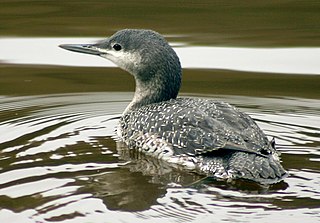
Phaethoquornithes is a clade of birds that contains Eurypygimorphae and Aequornithes, which was first recovered by genome analysis in 2014. Members of Eurypygimorphae were originally classified in the obsolete group Metaves, and Aequornithes were classified as the sister taxon to Musophagiformes or Gruiformes.

Archelosauria is a clade grouping turtles and archosaurs and their fossil relatives, to the exclusion of lepidosaurs. The majority of phylogenetic analyses based on molecular data have supported a sister-group relationship between turtles and archosaurs. On the other hand, Archelosauria had not been historically supported by most morphological analyses, which have instead found turtles to either be descendants of parareptiles, early-diverging diapsids outside of Sauria, or close relatives of lepidosaurs within the clade Ankylopoda. Some recent morphological analyses have also found support for Archelosauria.
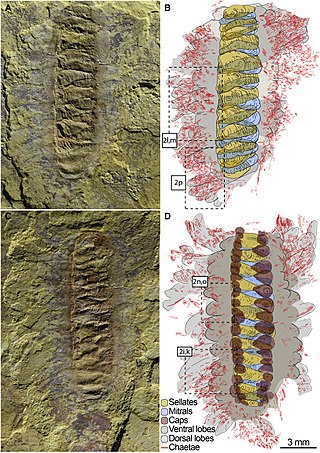
Wufengella is a genus of extinct camenellan "tommotiid" that lived during the Early Cambrian. Described in 2022, the only species Wufengella bengtsonii was discovered from the Maotianshan Shales of Chiungchussu (Qiongzhusi) Formation in Yunnan, China. The fossil indicates that the animal was an armoured worm that close to the common ancestry of the phyla Phonorida, Brachiozoa and Bryozoa, which are collectively grouped into a clade called Lophophorata.


















